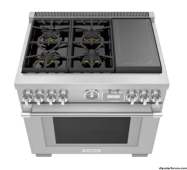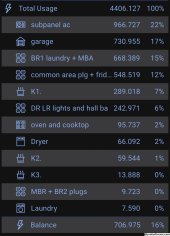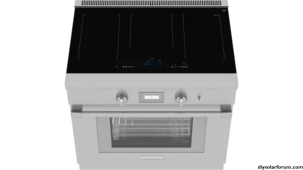l00semarble
New Member
- Joined
- Jan 1, 2022
- Messages
- 150
I'm building a luxury off grid house in Costa Rica. We are getting close to time to pick appliances. This is not a frugal living situation but we do need to be smart about power. The original plan calls for a 36" range which we planned to get in "dual fuel" with gas burners and electric oven.
We have competing pro/cons. Obviously to cook with all electric we need more PV input and more batteries and inverters sized appropriately. Cooking with propane takes some of the load off the solar/battery/inverter system but we have to haul bottles to the house as there is no gas service or delivery option. The idea of being totally energy independent making ALL our power is better but heating anything is such a heavy consumption that taking it off the electric side makes solar success easier. (for the record we will have grid back up so the worst case scenario is close the utility main and buy some kwh if necessary.)
So we are shopping appliances and considering Thermador for several reasons including we really like their refrigeration options. They have promos if you do all Thermador appliances so I was then looking at their ranges.
They have an interesting 36" range option with 4 gas burners and 1/3 of the top is an induction module. The marketed benefits are faster boiling, precise control, oversized heating area, etc. But....since I plan to be on a solar/battery system it would be pretty cool to be able to make a decision about whether to cook with gas or electric depending on solar/battery conditions. I think the appliance looks unusual though which is a drawback.
Anybody ever consider anything like this? Thoughts?

We have competing pro/cons. Obviously to cook with all electric we need more PV input and more batteries and inverters sized appropriately. Cooking with propane takes some of the load off the solar/battery/inverter system but we have to haul bottles to the house as there is no gas service or delivery option. The idea of being totally energy independent making ALL our power is better but heating anything is such a heavy consumption that taking it off the electric side makes solar success easier. (for the record we will have grid back up so the worst case scenario is close the utility main and buy some kwh if necessary.)
So we are shopping appliances and considering Thermador for several reasons including we really like their refrigeration options. They have promos if you do all Thermador appliances so I was then looking at their ranges.
They have an interesting 36" range option with 4 gas burners and 1/3 of the top is an induction module. The marketed benefits are faster boiling, precise control, oversized heating area, etc. But....since I plan to be on a solar/battery system it would be pretty cool to be able to make a decision about whether to cook with gas or electric depending on solar/battery conditions. I think the appliance looks unusual though which is a drawback.
Anybody ever consider anything like this? Thoughts?





